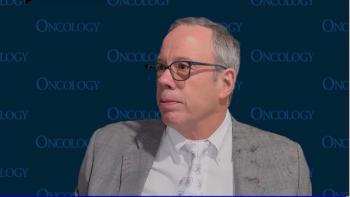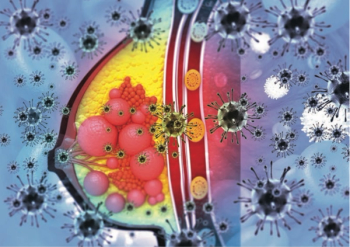
Pralsetinib Shows Durable Activity in Chinese Patient With RET Fusion+ NSCLC
Data from the ARROW study demonstrated safety and efficacy of pralsetinib in a cohort of Chinese patients with RET fusion–positive non–small cell lung cancer.
Data from the global phase 1/2 ARROW study (BLU-667-1101; NCT03037385) that were presented at the 2021 World Conference on Lung Cancer demonstrated efficacy of pralsetinib (Gavreto) in a cohort of Chinese patients with RET fusion–driven non-small cell lung cancer (NSCLC), without regard for prior treatments received.
“So far, both in America and in China, this drug has been approved for RET fusion positive non-small cell lung cancer patients based on the global trial ARROW study,” said lead study author Qing Zhou, MD, of the Guangdong Lung Cancer Institute in Guangdong, China, during his presentation at the 2021 World Conference on Lung Cancer.
There were 63 patients enrolled in the Chinese cohort of the study: 33 had prior platinum-based chemotherapy treatment while 30 had no prior systemic treatment.
Of those who had chemotherapy prior there was an overall response rate (ORR) of 66.7% (n=22; 95% Cl: 48.2-82.0) at a median follow-up of 17.0 months (range: 16.3-18.1) . Three percent (n=1) had a complete response (CR) and 63.6% (n=21) had a partial response (PR). Researchers reported that the median time to first response among this pretreated patient cohort was 1.87 months (range, 1.7-3.8). Six-month and 9-month duration of response (DOR) rates were 77.3% (95% Cl: 59.8-94.8) and 50.0% (95% Cl: 29.1-70.9), respectively. Treatment duration had a median of 14.65 months (range: 0.9-20.0).
In the group of patients who did not receive prior therapy, the ORR was 80% (n=24; 95% Cl, 61.4-92.3), of which 6.7% (n=2) experienced a CR and 73.3% (n=22) experienced a PR. Median follow-up for these patients was 8.2 months (range: 7.1-8.6), while the median treatment duration was 7.13 months (range: 0.5-14.0) . Median time to first response among the group was 1.87 months (range, 1.7-3.8) . DOR rates were 76.7% (95% Cl: 55.6-97.8) and 38.3% (95% Cl: 0.0-92.5), at the 6- and 9-month marks, respectively.
Of note, 68.18% (n=15) of responders who were on platinum-based chemotherapy prior and 79.17% (n=19) of those without prior treatment remain on the treatment.
“I think the pralsetinib should be a new standard of care for both Chinese patients and other global patients with RET fusion-positive advanced non-small cell lung cancers,” Zhou said.
Data from the study reported that pralsetinib was well-tolerated in the Chinese patient cohort with a manageable safety profile. Treatment-emergent adverse events (TRAEs) were experienced in all 68 patients, 7 of which discontinued treatment due to a TRAE.
“I think compared to other targeted treatment, we should pay more attention to the hematological toxicities,” Zhou explained, highlighting neutropenia, anemia and platelet count decrease as some of the hematological adverse events to look out for.
Any-grade TRAEs included aspartate aminotransferase increase (80.9%), white blood cell count decrease (60.3%), alanine aminotransferase increase (57.4%), blood creatine phosphokinase increase (45.6%), hypertension (35.3%), blood creatine increase (29.4%), bilirubin conjugated increase (27.9%), constipation (27.9%), gamma-glutamyltransferase increase (27.9%), blood alkaline phosphatase increase (26.5%), malaise (25.0%), blood bilirubin increase (23.5%) and hypocalcemia (20.6%).
Grade 3 or 4 TRAEs that occurred in 5% or more were decreased lymphocyte counts (5.9%), leukopenia (5.9%), and hypophosphataemia (11.8%).
“I think to conclude, pralsetinib is a promising type of treatment with rapid and durable clinical activity in Chinese are patients with RET fusion-positive non-small cell lung cancer regardless of the previous treatment. And the safety profile is manageable and the tolerable,” Zhou said.
Reference
Zhou Q, Wu Y-L, et al. Efficacy and Safety of Pralsetinib in Chinese Patients with Advanced RET Fusion+ Non-Small Cell Lung Cancer. Presented at: 2021 World Conference on Lung Cancer; September 8-14, 2021. Virtual. Abstract M02.02.
Newsletter
Stay up to date on recent advances in the multidisciplinary approach to cancer.

















































































